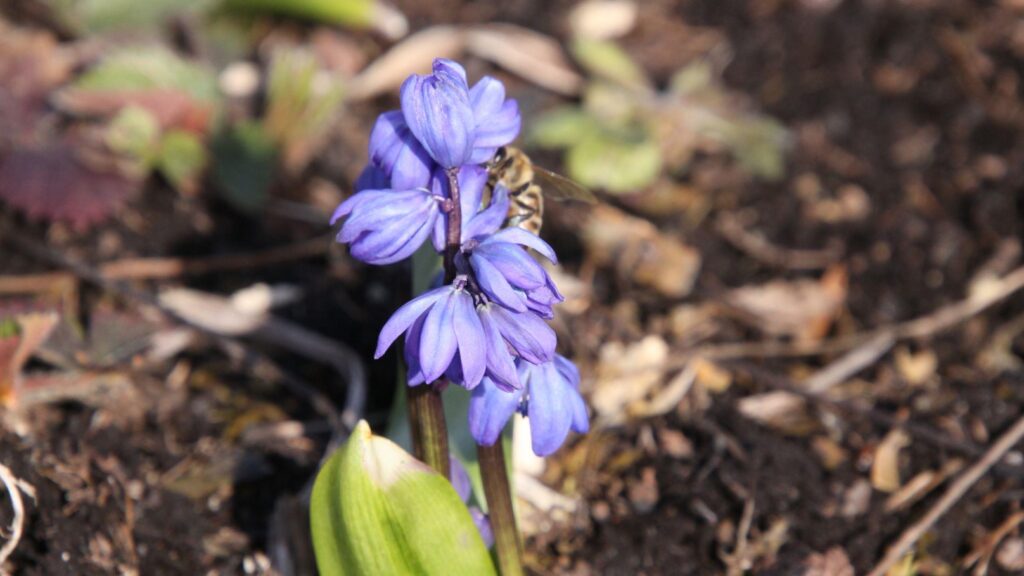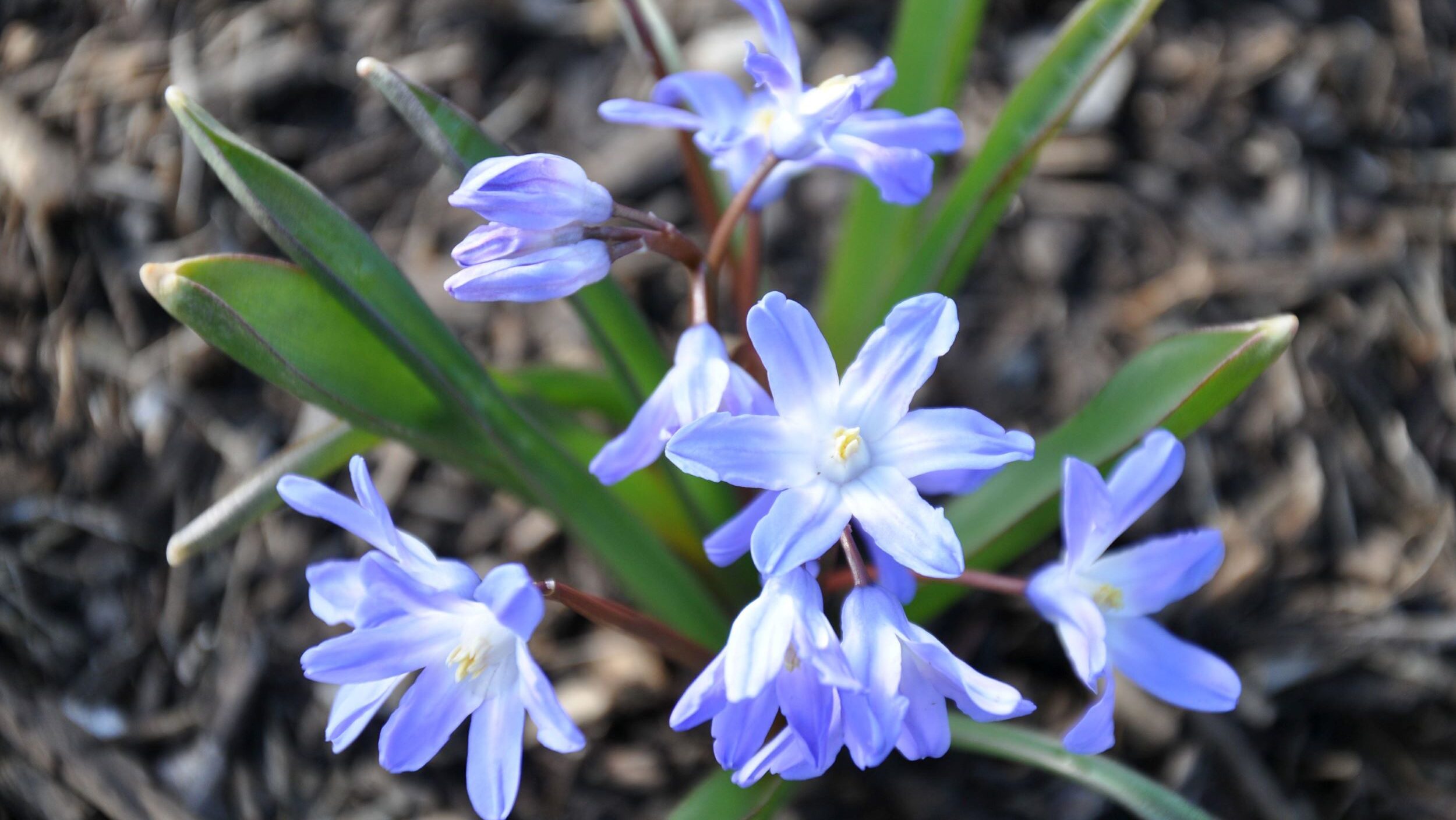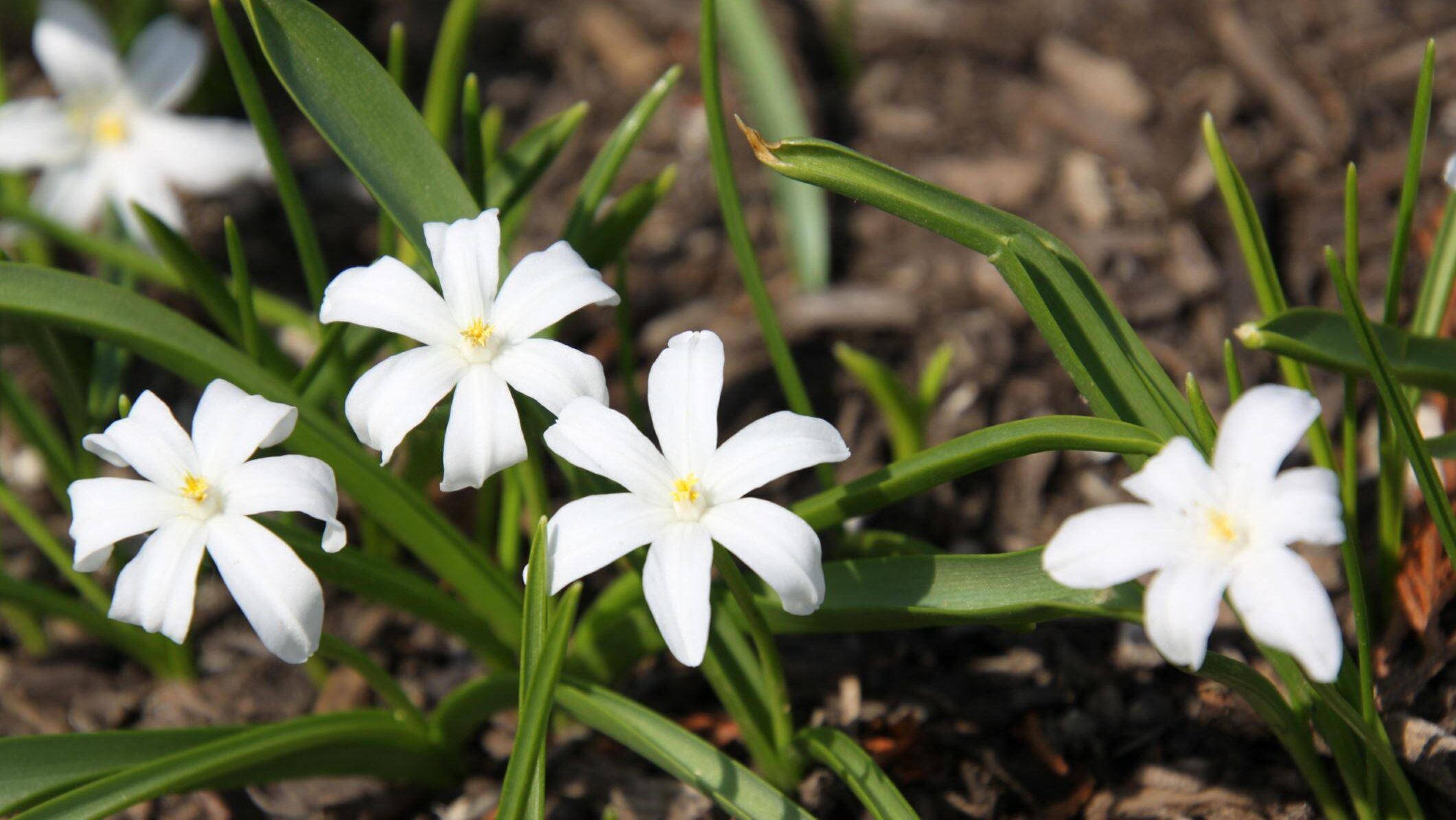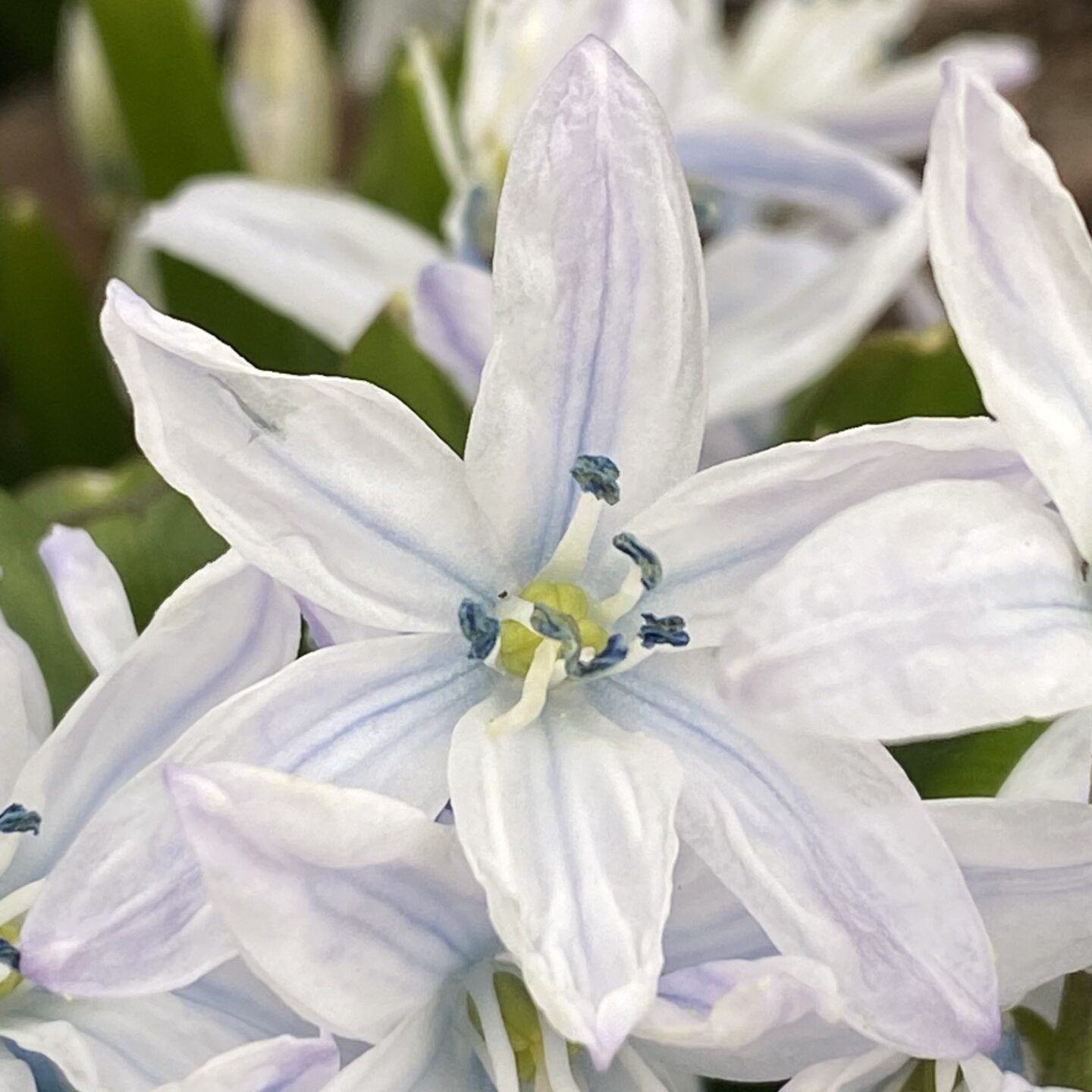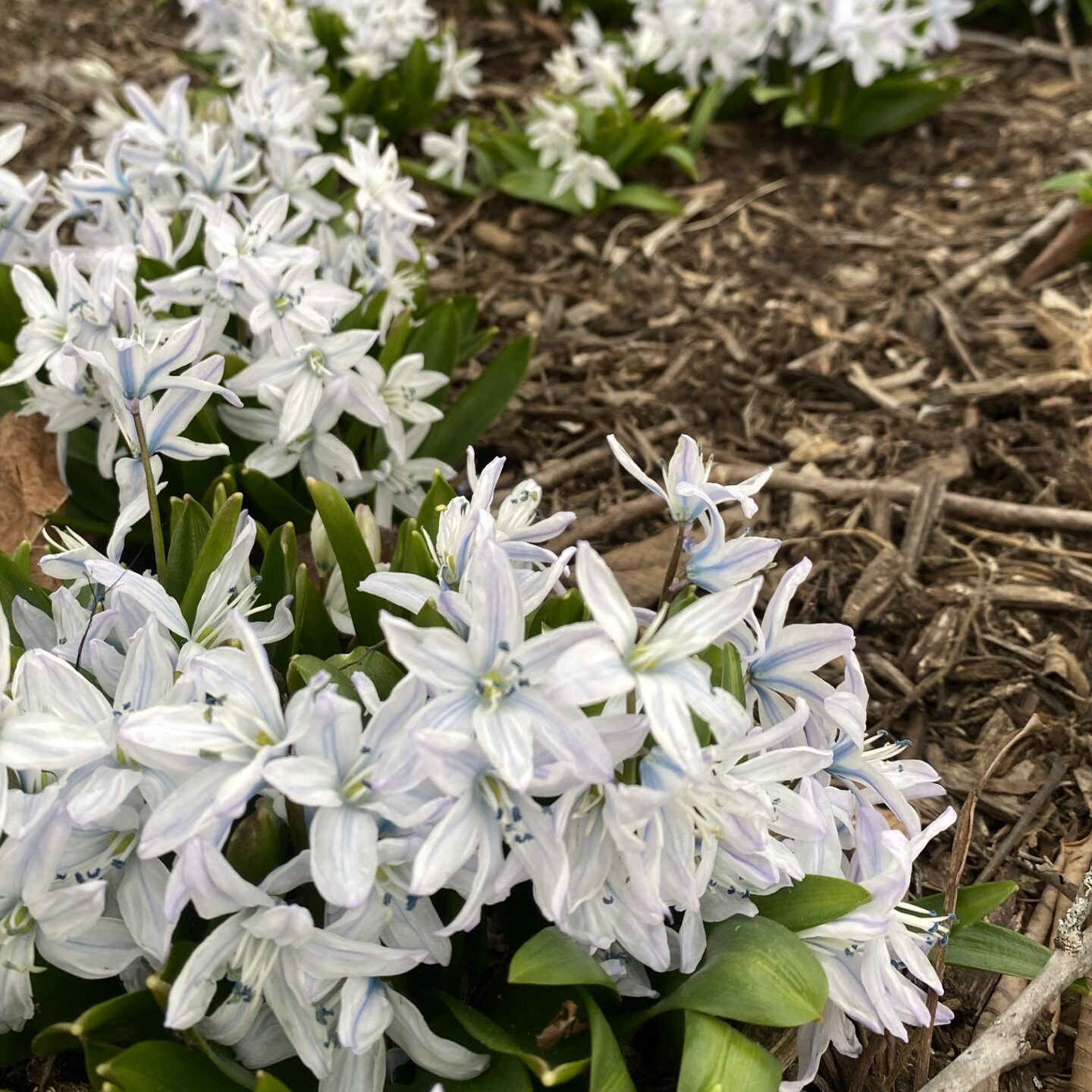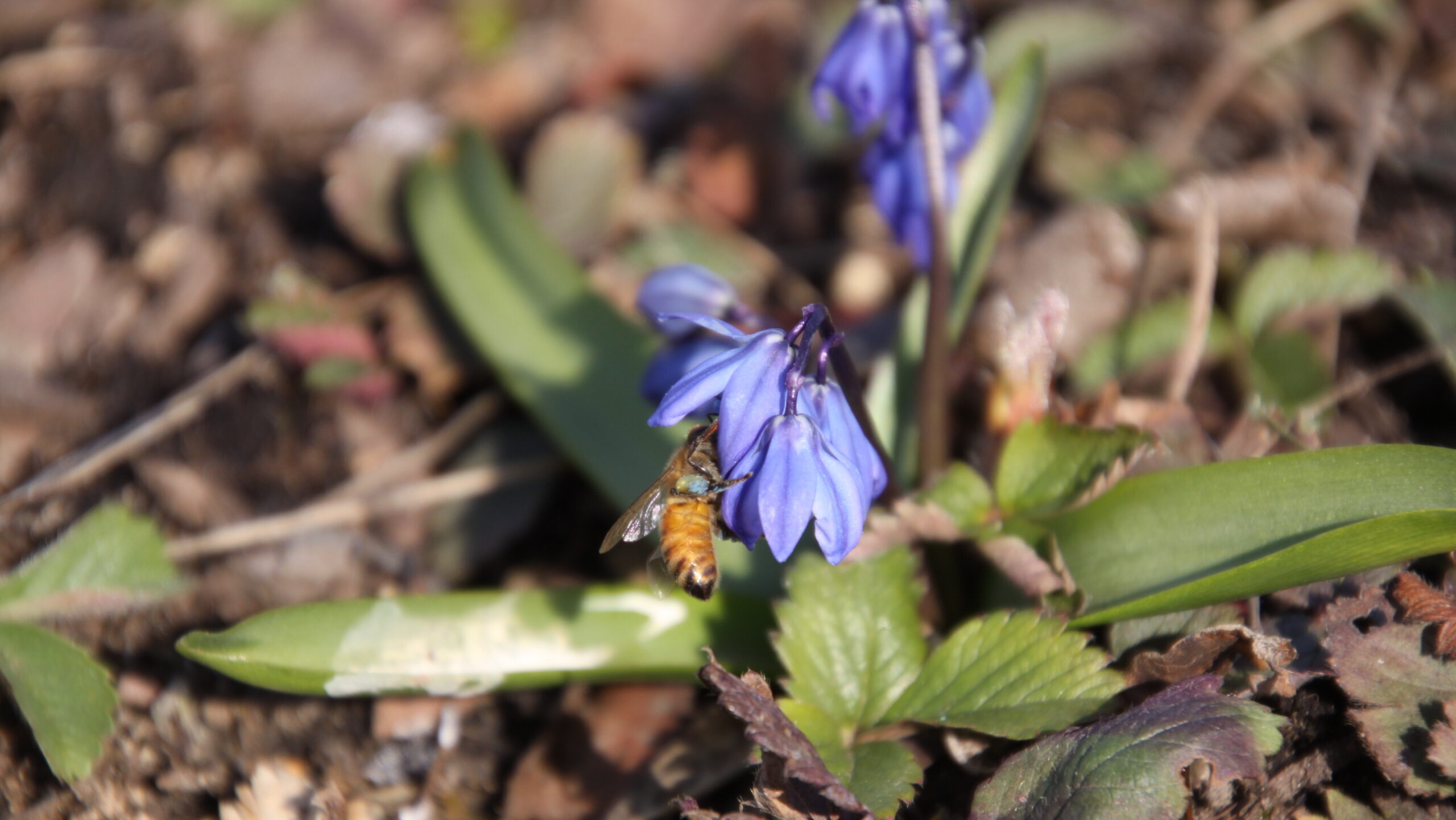
As the daylight and temperatures increase, a noteworthy plant emerging from the dormant winter landscape can be seen. Scilla, commonly referred to as squill, is a member of the Asparagaceae family and is a perennial herbaceous plant. This type of spring ephemeral grows from a bulb and, once established, will form colorful colonies which will re-emerge each springtime. These bulbs prefer well-drained soil, zones 3–8, and full sun to partial shade. They can typically be seen blooming from mid-March into April, while some varieties emerge in the autumn season. Scilla spp. are chosen for landscape designs due to their low maintenance requirements, cold hardiness, and deer resistance.
The word ‘scilla’ originates from the Greek word ‘skilla,’ meaning poison, referring to the toxic components within several varieties. Its use and popularity date back to ancient Greece and Rome, where its bright blue flowers symbolized trust and sincerity. Additionally, it was believed to ward off evil in the Middle Ages.
Squill is known for its star-shaped flowers, which are typically blue and purple. Pink and white varieties are known as well. Flowers possess 6 petals and 3–5 narrow basal leaves. Foliage will disappear by summer as the plant goes dormant.
To establish a bed, bulbs are spaced 2–3” apart and up to 4” deep. Bulbs will naturally spread from offshoots of the ‘mother bulb’ or from self-seeding. Once planted, moderate watering is required during the growing season. Be sure not to overwater as they are prone to root rot. This plant does well in groupings surrounding trees and shrubs, in and around woodlands and naturalized areas, and in rock and cottage gardens.
The Arboretum hosts several varieties, including: Scilla mischtschenkoana (white squill), Scilla forbesii ‘Blue Giant’ (glory of the snow), Scilla siberica ‘Spring Beauty’ (Siberian squill), Scilla luciliae ‘Alba’ (glory of the snow), and Scilla sardensis (lesser glory of the snow). Plantings are spread throughout the gardens and can be located using the Blooming Bulbs Story Map.
Scilla mischtschenkoana, or white squill, is usually the first squill to emerge at the Arboretum. It has a pale blue color and possesses resistance to both deer and rabbits. Check out all the pollinators swarming these blooms next time you’re visiting the gardens!
Scilla siberica ‘Spring Beauty’ emerges shortly after Galanthus (snowdrops) and produces a drooping, bell-like, deep-blue flower. The variety ‘Spring Beauty’ is known for its longer bloom window and deep blue hues.
